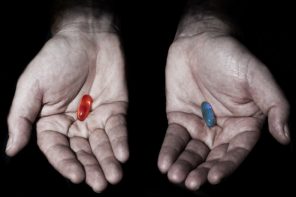April 10, 2005 was a bright Sunday morning. Around 10 o’clock a group of women, some leaders in the broader women’s movement, others feminists of faith gathered in front of NBC’s upper northwest DC headquarters. We were picketing Meet the Press (which we dubbed “Meet the Patriarchy”). A few Sundays earlier, Tim Russert convened a panel of religious leaders to discuss religion and politics in America. Not a single woman was among. The show was the second time in less than six months that an important dialogue on the state of religion in America excluded women. Frank Rich criticized a similar MTP discussion of religion and values In November 2004, which also featured an all male panel.
I was reminded of this and many other instances when feminists – those working in the broader women’s movement and those working in religious organizations have come together to claim their voice for justice as I read a new and important study and map of the state of the world of women and faith in America. Entitled “Healers of our Time: Women, Faith and Justice,” the report and the on-going project it represents is the brainchild of Helen LaKelly Hunt and The Sister Fund. Hunt has been exploring the link between the broad feminist movement and women of faith for almost two decades. The Sister Fund, which she founded and where she serves as president, has been one of a few foundations that supports feminists working on issues of faith and justice.
The report — which substantially expands on a Ford Foundation-funded project initiated by the Institute for Women’s Policy Research — identifies and documents three areas where women’s empowerment and religion are linked: activism, scholarship, and popular culture. Hunt has been a tireless bridge builder. She works to convince the women’s movement that faith need not be the enemy of feminism and conversely to convince women of faith that not all feminists think religion is all bad. Certainly, the online survey conducted as a part of the project indicates that the women’s movement’s goal of full equality is strongly supported by women of faith as 75% say that religion is important to their lives.
The report is short on in-depth analysis of the strategies and challenges that face women within their denominations and the turbulence that accompanies the internal struggle regarding how to manage those challenges. Indeed, there is a disconnect between two of the three sections in the report. The extraordinarily strong section on scholarly work by religious feminists really grapples with issues of patriarchy, power, women’s nature and theo-political issues, in other words, the internal dimension of the encounter between women and religion. The section on activism focuses far more intensely on the role women of faith have played and could play in justice seeking efforts in the larger society. This in no way takes away from the importance of the report. Both feminists well schooled in the issues and those for whom religion is an alien topic will learn much – and what they learn is accurate and wise.
I was blown away by the appendices to the report. The lists of organizations, donors, books, articles, conferences is exhaustive. Almost nothing has been overlooked. A “sampler” of academic discourse provides short descriptions of the major lines of inquiry and research in feminist studies in religion. In this section and others, the fine hand of two religious groups who collaborated in the study is evident: Women In Theology and Ministry and the Candler School of Theology at Emory University. I know I will turn to this material with great regularity.
The concluding question? What good will this report do? I am sure it will be widely distributed. It is an excellent handbook for media. Perhaps there will be more Meet The Press panels on religion with no women. Among its many recommendations is the need for more funding of both faith based women’s groups working for equality and the cameo stories of successful faith based women’s groups give donors good leads in figuring out the range of issues and groups worth supporting. For women working for justice from their spiritual and religious insights the publication is a shot in the arm, healing balm itself for work that has for too long been out of sight.
You can download the full report here. Do it now.



